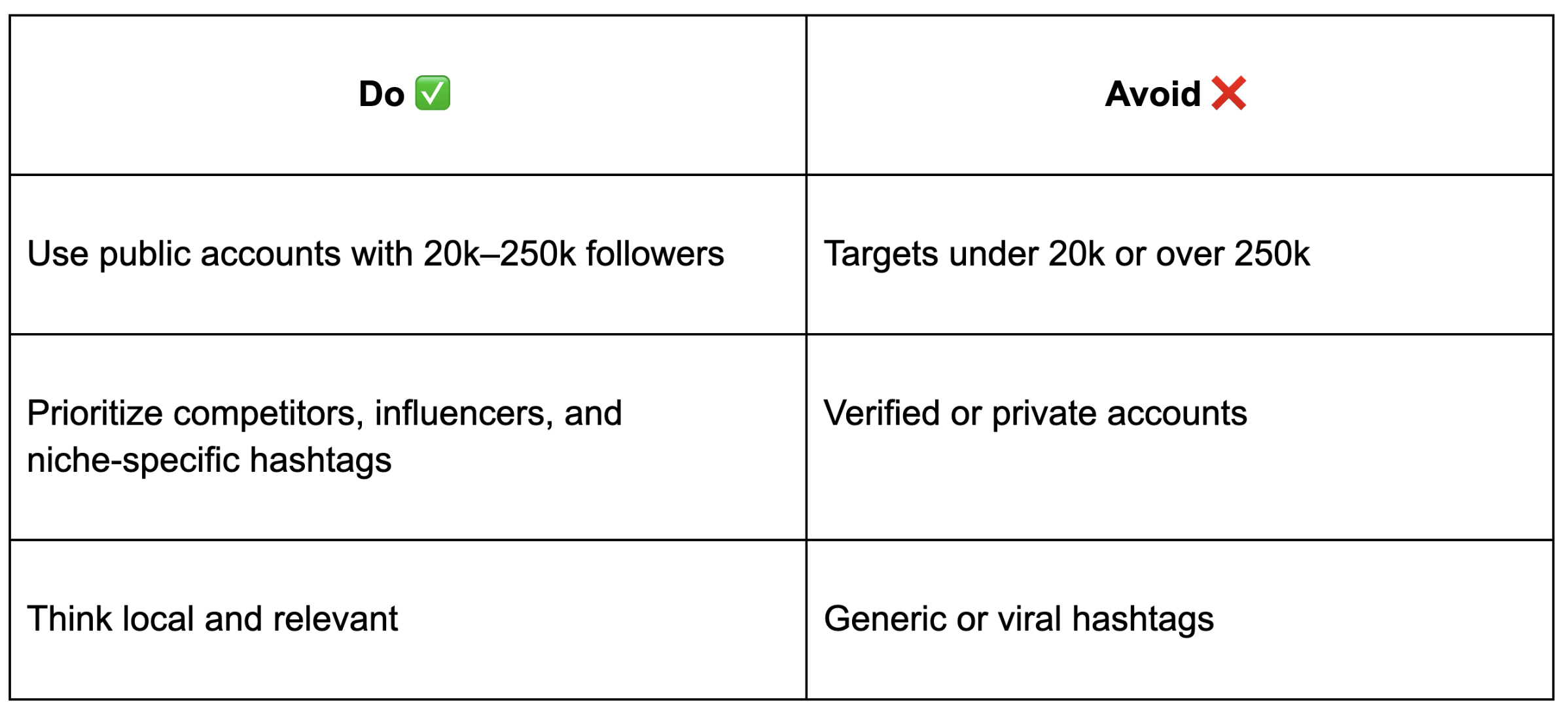Selecting the right targets is one of the most important parts of your growth journey with Kicksta. While we’ve already covered how to set up your targets, this guide will walk you through the best practices to make sure you’re making smart, strategic decisions that align with your audience.
✅ Match targets to your audience
This might sound obvious, but it’s worth repeating: your targets should be followed by the kind of people you want following you.
For example:
-
If you’re a local coffee shop in Austin, you don’t want to target international fashion influencers.
-
If you’re a fitness coach, targeting gaming accounts probably won’t get you meaningful results.
I think you got the idea!
📏 Consider the target size
The size of your targets plays a big role in how effective they are — and how often you’ll need to update them.
Here’s what to keep in mind:
- Too Small (<20k followers/posts):
These will be used up quickly by the system, meaning you’ll need to replace them frequently — sometimes daily. Not ideal for long-term automation.
- Too Large (>250k followers/posts):
These targets take longer to analyze and often contain a higher percentage of bot or inactive followers. This can lead to low-quality growth and fewer meaningful engagements.
🎯 Pro tip: Look for accounts or hashtags with between 20k and 250k followers or posts.
🚫 Avoid private or verified accounts
Kicksta cannot access the followers of:
-
Private accounts
-
Verified accounts (blue checkmarks)
If you add them to your targeting list, the system won’t be able to engage with their audience at all. Always make sure your targets are public and unverified.
💡 Use proven target types
While you can always get creative with your targeting, here are the 4 most effective types we recommend:
- Direct Competitors
People following your competitors are likely already interested in what you offer. Targeting them increases your chances of a followback — especially if your content is engaging or your offer is better.
- Complementary Brands
These are businesses that share your audience without directly competing. For example, a hair stylist could target local nail salons or beauty boutiques.
- Influencers & Bloggers
Accounts with influence in your niche often have loyal, engaged audiences. Find influencers aligned with your values and brand style.
- Localized Hashtags
General hashtags cast too wide a net. Instead, use location-based ones or language-based ones to attract a specific, relevant audience.
🔁 Quick Recap

Bonus tip: If you need help finding the right targets, you can check out our Targeting Suggestions feature for automated recommendations based on your niche!